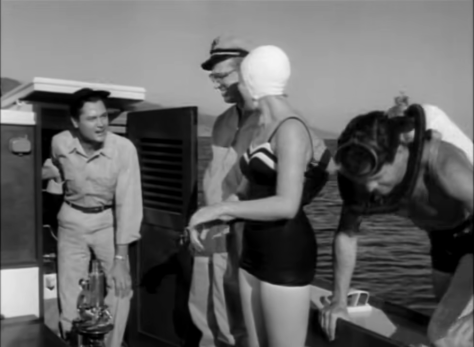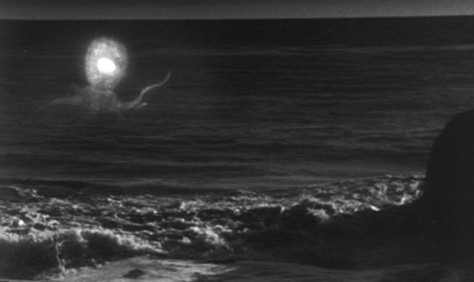
Two movie posts in one week? Yes, I had so many things I wanted to write about that I’m starting my double features a bit early this summer. In June, you’ll be getting a new millennium subject early in the week, and something more vintage on Thursdays.
I was already planning on writing about this movie at some point, but the passing of Roger Corman (a few weeks ago as of this posting) made it a top priority, and I’m hoping to cover more of his movies in the near future. Of course, Corman had a big impact on the entirety of Hollywood film with his prolific filmography, general eye for talent, and, let’s say, economical methods, but the many monster movies he either directed (I’ve written about a few of them) or produced do have a special place in that vast filmography—with all their B-movie qualities, there were a few that offered genuine innovation in the category, or at the very least were uniquely bizarre and entertaining. There are also the times where he provided a starting point for filmmakers who would go on to become some of the biggest creative forces in monster movie history, including Joe Dante’s big break with Piranha. In a career that spanned everything from Edgar Allan Poe adaptations to women in prison movies and eccentric comedies, the monster movies are a crucial part of his legacy—beginning with Corman’s first-ever film as a producer.
As the story goes, Corman was irritated after seeing a script he wrote altered by the studio, so he decided to start his own production company to have complete control of the movies he worked on. Monster From the Ocean Floor was the first film he produced, and its six-day, cost-saving-whenever-possible production (the budget is somewhere between $12,000 and $35,000 depending on who you ask) was the beginning of the patented Corman method that would serve him for the rest of his career. The money he received up front from Lippert Pictures for Monster was used to fund his next movie, something called The Fast and the Furious(!), which was the first movie he worked on with distributors Samuel Z. Arkoff and James H. Nicholson, the founders of his longtime distributor American International Pictures.
On a pure film history level, Monster From the Ocean Floor is actually significant, even if it is rather unassuming as a low budget fifties monster movie that could be best described as “quaint.” I would also argue that it, in its unassuming way, it’s also a fairly forward-looking piece of fifties creature feature history—released between more famous big studio fare, specifically Creature From the Black Lagoon and Them!, it gets into some of the major themes of the era early, signalling the specific form of nuclear paranoia that haunts a large number of these movies. Corman and his crew were not establishing their own distinct brand of monster movie, but developing the entire genre as a whole without really trying—and that’s a very Corman thing to do.
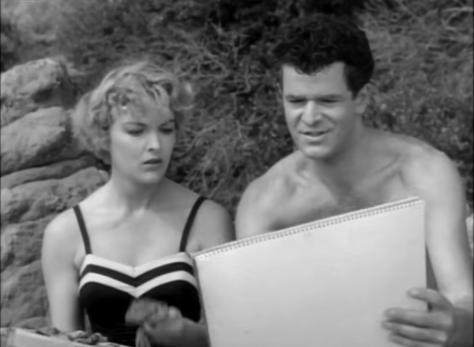
This movie’s plot was basically backwards-engineered to justify the employment of a one-person mini-sub that Corman found, getting to use it pretty extensively for free in exchange for crediting its manufacturer, Aerojet General, at the top. The story, written by Bill Danch (primarily a writer of cartoons, including later period Looney Tunes, Mister Magoo, the sixties Spider-Man series, and a whole lot of Filmation stuff) basically amounts to “a woman on vacation tries to solve a monster mystery”—the woman, Julie (Anne Campbell), is an illustrator of industrial products like refrigerators, and is apparently a talented painter of oceanic landscapes, but since we never actually get to look at her paintings, we only have the impressed reactions of every other character to go on. On holiday on the Pacific coast of Mexico, she runs into a local boy who apparently hangs around tourists solely to bum them out by telling them his father is dead, and then a group of marine biologists led by Steve (Stuart Wade, seen also in such amusingly-titled schlock as Teenage Monster and The Thing That Wouldn’t Die), who is having some fun in the waters in the aforementioned mini-sub while investigating the futuristic idea of planting crops underwater to feed the explosively expanding human population. Watching this immediately after the news of Corman’s death became public, it was nice to see Corman himself show up for one line as a mechanic, recognizable even back then.
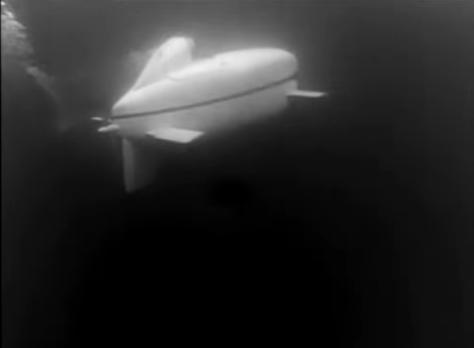
In the SF Encyclopedia’s entry on this movie, they point out how unusual it was for the time to have a female lead driving the plot in one of these movies—and indeed, Julie is portrayed as a morally upright go-getter, who after hearing the boy’s story of his father being taken by a “devil” and meeting with another local (Jonathan Haze, the future Seymour in Corman’s The Little Shop of Horrors) whose friend has evidently been wrenched completely out of the mask of his diving suit (an image that the movie passes over swiftly but is actually pretty horrific if you think about it), puts together that those two events might be connected. She wants to figure out what’s going and help the locals avoid future tragedies, so she begins interviewing people about the supposed sea monster, and badgers Steve into helping her scuba-scout the waters looking for more clues, despite his general disbelief in this stuff.
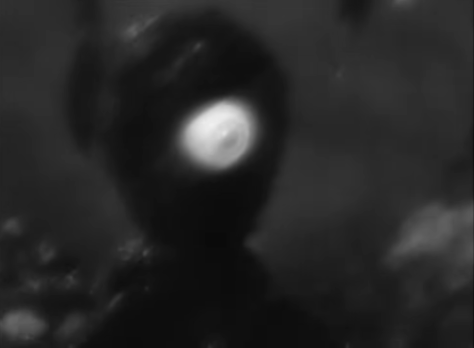
Like having a female lead, structuring the story as a mystery of sorts is novel for a monster movie of this vintage—although it’s pretty clear that it’s simply a way to get this to movie-length without relying too much on actually showing the monster, with the many conversations between our relatively small cast supplemented by scenes of either scuba diving to rather beautiful piano music (giving those scenes the feeling of a silent film) or the mini-sub scooting around the Pacific waters (the opening narration makes mention that all the underwater scenes were shot on location, which may or may not actually be true.) Even then, this movie is only barely feature length, clocking in at about sixty-five minutes—in three years, Corman would make the similarly brisk Attack of the Crab Monsters, which is only sixty-eight minutes and also has extensive scuba diving scenes, but feels breakneck where this one is rather lackadaisical, oftentimes resembling an educational film in both the direction and the style of acting. The director, it should be noted, is Wyott Ordung, writer of the preceding year’s classic-in-a-sense Robot Monster, and who apparently deferred part of his payment just for the chance to direct a movie.

As it turns out, there is a monster bedevilling that small Mexican village, a shy beast that makes a brief, glow-in-the-dark appearance in the middle of the movie and appears again in the climax. A wobbly cyclopean balloon is not exactly a scary creature, but it at least means that this is one fifties monster whose creature actually resembles the one depicted on the poster (not even Them! can claim that.) As we come to learn, it is in fact an irradiated amoeba—where does the eye come from? Who knows!—that has grown to gargantuan size and now swims around dissolving unaware passersby, and that concept alone is fairly unusual for a monster movie this early in the fifties cycle, given that the most famous monsters of the time were dinosaurs or tall guys, give or take a martian. Coming one year after The Beast From 20,000 Fathoms, its continuation of that movie’s apprehension at the potential effects of atomic testing would not be surprising, but presenting an organism actively mutated by radiation—and specifically naming the Bikini Atoll tests that began in 1946 (which we are told is when the monster started showing up)—is a far more direct invocation of the idea than even The Beast had. Considering that the rest of 1954 would also include Them! (which this movie beat to the punch by about a month) and Godzilla, the latter also referencing the Bikini Atoll tests, Monster From the Ocean Floor inadvertently becomes a sort of bellwether of monster movies to come, all the unbelievable nightmare scenarios arising from the continued exploding of the natural order.
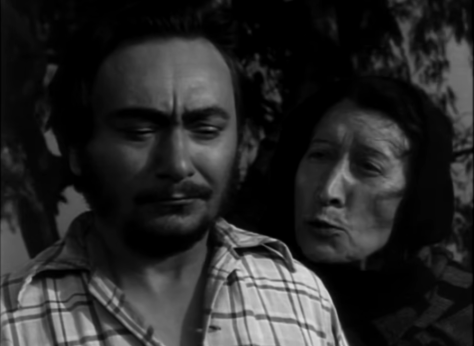
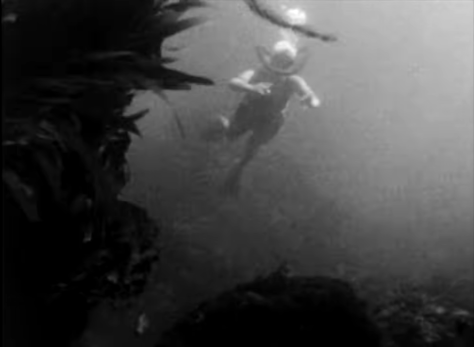
You do have to do some waiting and wading through mostly mundane scenes to get to the infrequent appearances of the titular one-eyed mutant, a frequent criticism of vintage B-level monster movies. Corman’s monster movies would gain more interesting story angles and more engaging performances as they went along, but you’ll still find some strange plot turns and bits of dialogue. For example, Steve’s partner, who at point says Julie has “got a good head on her shoulders…among other things…”, casually tells a story about finding a freshly-laid pteranodon egg (or as he pronounces it, “terr-andon”) on an island, as if one of the scientific discoveries of the twentieth century is really only a funny anecdote. There’s a moment where Julie mistakes a cow for the monster, which only makes sense if she’s seeing it in the same blurry day-for-night footage the audience is. More prominently, the latter half of the movie has a bizarre subplot where an elderly local (Inez Palange, apparently an uncredited villager in Frankenstein) convinces the kindly alcoholic Pablo (played by the director) that the only way to appease the monster and make it go away is to sacrifice Julie (she asks him “Who is your god, Quetzalcoatl, or the new one?”) This is not exactly a sensitive portrayal of the people of Mexico, but at least Pablo is conflicted and only halfheartedly follows direction. While on a boat, and with Julie momentarily turned away from him, Pablo pulls out a knife, slowly lurches towards here, and then finds himself unable to complete the task…yes, I was also quite surprised that they recreated a scene from Snow White in this fifties monster movie, although Julie does project a sort of naively innocent Disney princess vibe at times.
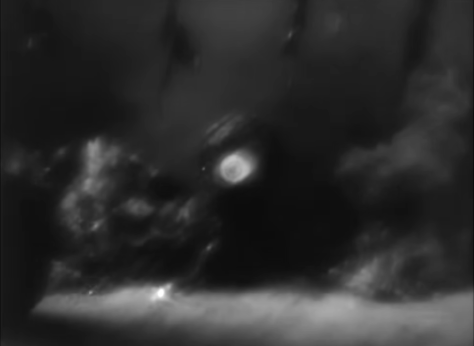
There are other Snow White comparisons you could make as well, not always in the film’s favour. For all that the movie makes Julie the heroine with agency, the one who actually moves the plot forward, it is at least little undermined when the big climax involves her being cornered underwater by the giant amoeba—who despite being a boneless organism, seemingly cannot squeeze into a crevice—and must be rescued by Steve ramming his precious mini-sub into it’s big eye. You have to give them some credit for trying, though. While far from remarkable in a decade that saw a deluge of nearly identical atomic monster plots, Corman’s first is mostly unambitious but remains an early signal of some of the unexpected wild swings he’ll be taking over the next few years, and the next few decades.
